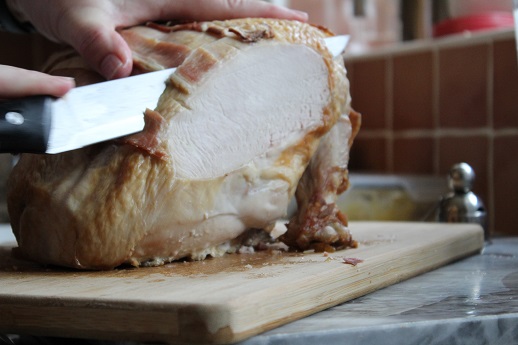Wireless meat thermometers have revolutionized the way we cook meat, providing convenience and accuracy in monitoring the internal temperature of food during the cooking process. Understanding these devices’ working principles is crucial to fully appreciate their functionality.

Working Theory
In this part, you will gain knowledge of the working theory from 8 aspects. If you have some interest, please read on.
1. Probes and Sensors
At the heart of a wireless meat thermometer are the probes and sensors. The thermometer typically comes with one or more probes that are inserted into the meat to measure its internal temperature.
These probes contain temperature sensors, often made of thermocouples or thermistors, which are sensitive to temperature changes.
2. Wireless Transmission
The thermometer’s main unit, which contains the display and processing components, communicates wirelessly with the probe. This wireless transmission can be achieved through various technologies such as Bluetooth or radio frequency (RF).
Some advanced models even come with Wi-Fi capabilities, allowing users to monitor the cooking process remotely through smartphone apps.
3. Temperature Conversion
As the probes sense the temperature of the meat, the data is transmitted to the main unit, where it is processed and converted into a readable temperature value.
The internal components of the thermometer work together to ensure accurate conversion and representation of the meat’s temperature on the display.
4. Calibration and Accuracy
Calibration is a critical aspect of wireless meat thermometers. Calibration involves adjusting the temperature readings of the probes to ensure they are accurate and match the reference temperature.
Some thermometers come pre-calibrated, while others require manual calibration. Regular calibration is essential to maintain the accuracy of the device over time.
5. Real-time Monitoring and Alerts
One of the key features of wireless meat thermometers is real-time monitoring. As the cooking progresses, the thermometer continuously updates the temperature readings on the display.
Users can keep a close eye on the meat’s temperature without having to open the oven or grill, ensuring that it cooks to perfection.
6. Alarm Functionality
Wireless meat thermometers often come with programmable alarms. Users can set specific target temperatures based on the type of meat being cooked and the desired level of doneness.
When the meat reaches the target temperature, the thermometer emits an alert, notifying the cook that the meat is ready.
7. Remote Monitoring through Apps
Modern wireless meat thermometers may offer app support, enabling users to monitor the cooking process from their smartphones or tablets. The app provides real-time temperature updates, alarm notifications, and sometimes even cooking tips and recipes.
8. Battery Power
To maintain wireless functionality, wireless meat thermometers are powered by batteries. The type of battery and its lifespan vary depending on the model and brand.
Some thermometers use replaceable batteries, while others come with rechargeable options.

Conclusion
The working principle of wireless meat thermometers revolves around integrating probes with temperature sensors, wireless transmission to a main unit, temperature conversion, calibration, real-time monitoring, and alarm functionality. These devices have simplified the cooking process and have become indispensable tools for achieving perfectly cooked meat dishes with precision and ease.
Understanding how they work empowers users to make the most out of their wireless meat thermometers and elevate their culinary skills to new heights.
